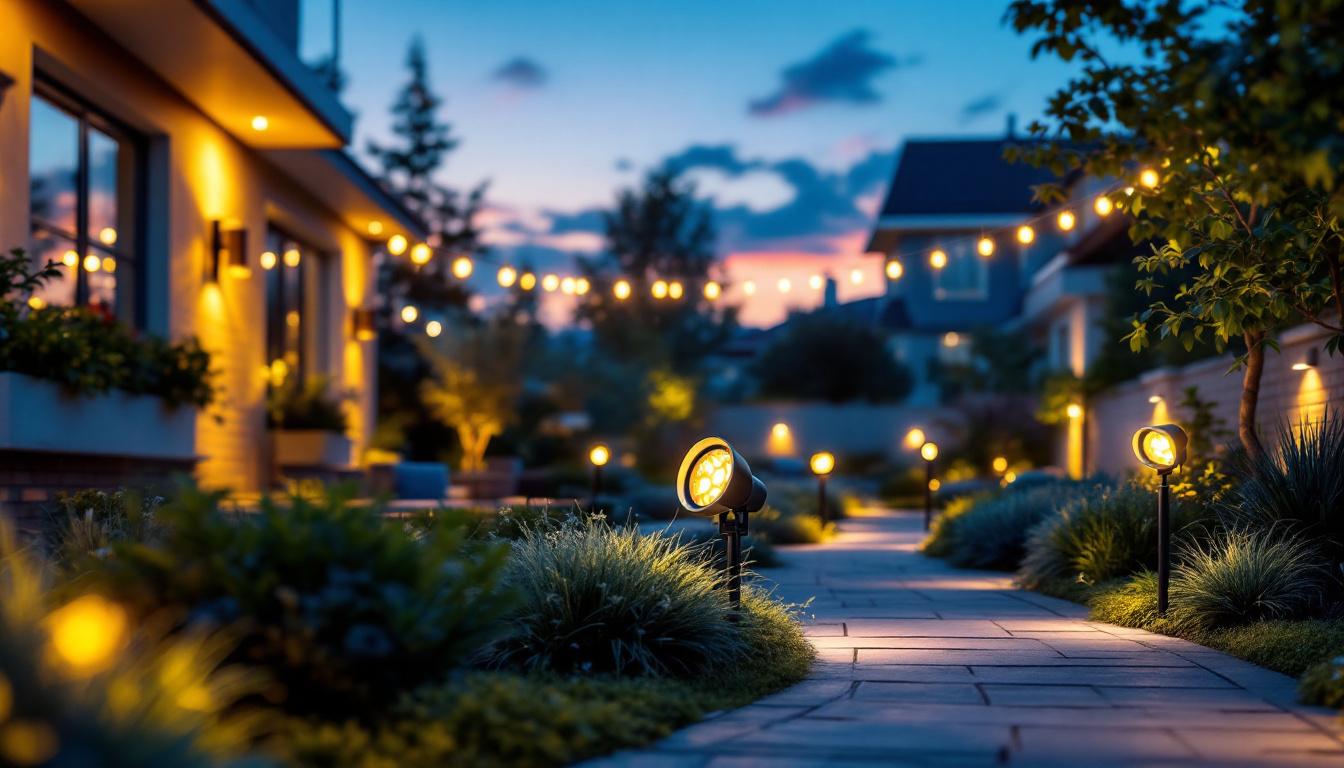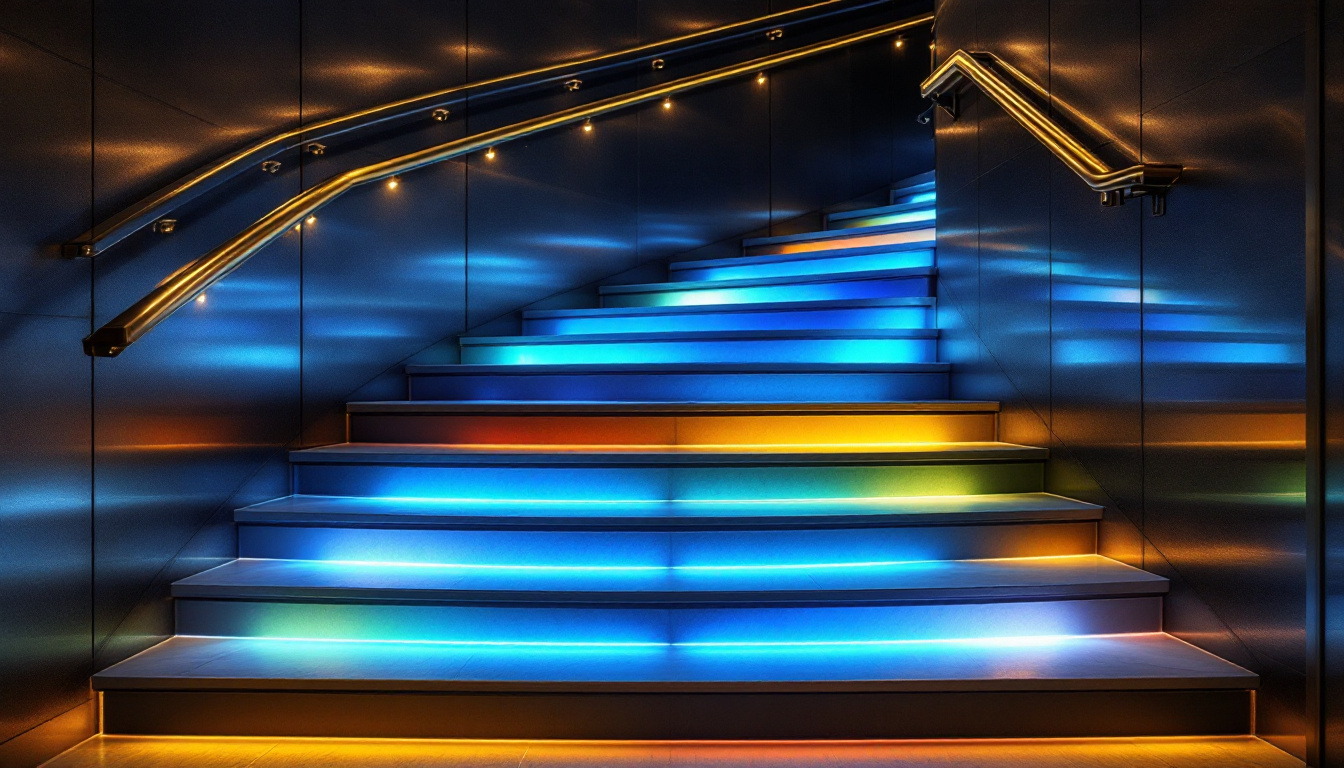
Outdoor spot light bulbs play a crucial role in landscape and architectural lighting, offering targeted illumination that enhances safety, security, and aesthetic appeal. For lighting contractors, understanding the nuances of these bulbs is essential to delivering high-quality installations that meet client expectations and comply with industry standards.
Whether illuminating pathways, accentuating garden features, or highlighting building facades, the choice of outdoor spot light bulbs impacts performance, energy efficiency, and longevity. This article explores the key considerations lighting contractors should be aware of when selecting and installing outdoor spot light bulbs.
One of the primary factors to consider when choosing outdoor spot light bulbs is the type of bulb technology. LED bulbs have gained immense popularity due to their energy efficiency and long lifespan, often lasting up to 25,000 hours. In contrast, traditional incandescent bulbs, while providing warm light, consume significantly more energy and have a shorter lifespan, making them less ideal for outdoor use. Additionally, the color temperature of the bulbs can dramatically affect the ambiance of an outdoor space; warmer tones create a cozy atmosphere, while cooler tones can lend a more modern and crisp feel to the environment.
Another important aspect is the bulb’s brightness, measured in lumens. Contractors must assess the specific lighting needs of a project to determine the appropriate lumen output. For instance, areas requiring high visibility, such as driveways or entrances, may benefit from brighter spotlights, while softer lighting may be more suitable for garden pathways or decorative features. Furthermore, the beam angle of the bulbs also plays a significant role in how light is distributed; a narrow beam can create dramatic highlights, while a wider beam offers broader coverage, making it essential for contractors to match the beam angle with the intended application to achieve the desired effect.
Halogen bulbs have long been a staple in outdoor lighting due to their bright, crisp light and relatively low initial cost. They produce a warm white light that is often preferred for highlighting natural elements like trees and shrubs. However, halogen bulbs tend to have a shorter lifespan and higher energy consumption compared to newer technologies.
Lighting contractors should note that halogen bulbs generate significant heat, which can affect fixture materials and surrounding landscaping. Proper fixture selection and installation techniques are necessary to mitigate heat-related issues and ensure safety. Furthermore, halogen bulbs are often praised for their excellent color rendering capabilities, making them an ideal choice for illuminating outdoor spaces where true color representation is essential, such as in gardens or patios. Their ability to be dimmed also allows for flexibility in creating different atmospheres, whether it’s a vibrant gathering or a calm, romantic evening under the stars.
LED technology has revolutionized outdoor lighting with its superior energy efficiency, long lifespan, and versatility in color temperature and beam angles. LED spot light bulbs consume up to 80% less energy than halogen counterparts and can last tens of thousands of hours, reducing maintenance costs and replacement frequency.
Another advantage of LEDs is their ability to operate effectively in a wide range of temperatures, making them ideal for outdoor environments. Lighting contractors should consider LED bulbs for projects where sustainability and long-term cost savings are priorities. Additionally, the compact size of LED bulbs allows for innovative fixture designs, enabling architects and designers to create unique lighting solutions that blend seamlessly into the landscape. With the option of adjustable color temperatures, from warm to cool white, LEDs can enhance the mood of outdoor spaces, adapting to seasonal changes or specific events.
Emerging smart lighting solutions incorporate features such as remote control, dimming, color tuning, and motion sensing. These bulbs can be integrated into home automation systems, providing clients with enhanced control and energy management.
For contractors, understanding the compatibility of smart spot light bulbs with existing or planned control systems is vital. Additionally, awareness of installation requirements and potential cybersecurity considerations will ensure a smooth implementation. The convenience of controlling outdoor lighting from a smartphone or tablet not only appeals to tech-savvy homeowners but also enhances security by allowing users to simulate occupancy when they are away. Moreover, smart bulbs can be programmed to adjust based on natural light levels, optimizing energy usage while maintaining the desired ambiance. This adaptability makes them a forward-thinking choice for modern outdoor lighting projects, aligning with the growing trend towards smart home integration.
The beam angle of a spot light bulb determines the width of the light cone it produces. Narrow beam angles (10°-25°) create focused, intense illumination suitable for highlighting specific features, while wider angles (30°-45°) provide broader coverage for general lighting.
Lighting contractors must assess the project’s lighting goals and select bulbs with appropriate beam angles to achieve the desired effect without causing glare or light pollution. Using adjustable fixtures in combination with the right bulb can offer flexibility on-site.
Color temperature, measured in Kelvins (K), influences the mood and appearance of outdoor spaces. Warm white light (2700K-3000K) creates a cozy ambiance, while cool white light (4000K-5000K) delivers a crisp, modern feel. For security lighting, cooler temperatures often enhance visibility.
The Color Rendering Index (CRI) measures how accurately a light source reveals colors compared to natural light. A CRI of 80 or above is generally recommended for outdoor spot lighting to ensure vibrant and true-to-life colors, especially in residential and commercial landscaping.
Outdoor lighting fixtures and bulbs must withstand exposure to moisture, dust, temperature fluctuations, and UV radiation. Look for bulbs with appropriate Ingress Protection (IP) ratings—typically IP65 or higher for outdoor spot lights—to ensure resistance to rain and dust.
Contractors should also verify that bulbs are compatible with the fixture’s housing and that any seals or gaskets are intact to prevent water ingress, which can cause premature failure or safety hazards.
The fixture type and placement significantly influence the effectiveness of outdoor spot lighting. Low-voltage fixtures are popular for landscape lighting due to their safety and energy efficiency, but line-voltage options may be required for higher output applications.
When positioning spot lights, contractors should consider the height, angle, and distance from the target to avoid unwanted shadows or glare. Using adjustable fixtures allows for fine-tuning after installation, ensuring optimal light distribution.
Outdoor lighting installations must comply with local electrical codes and standards, including proper grounding, circuit protection, and weatherproof connections. Using outdoor-rated wiring and connectors helps prevent corrosion and electrical faults.
Lighting contractors should also plan for surge protection to safeguard sensitive LED drivers and smart lighting components from voltage spikes caused by lightning or power fluctuations.
With increasing emphasis on green building practices, contractors are encouraged to recommend energy-efficient outdoor spot light bulbs that reduce environmental impact and operational costs. LEDs with integrated controls such as timers, dimmers, and motion sensors can significantly lower energy consumption.
Additionally, selecting bulbs with certifications like ENERGY STAR or DesignLights Consortium (DLC) ensures adherence to recognized efficiency standards, which may also qualify clients for rebates or incentives.
Improperly aimed or excessively bright spot lights can cause glare, discomfort, and light trespass into neighboring properties. This not only affects community relations but can also violate local lighting ordinances.
Contractors should use shielded fixtures, select bulbs with appropriate lumen output, and carefully adjust beam angles to minimize glare. Employing timers and dimmers can further control light levels during off-peak hours.
When upgrading existing outdoor spot lights, contractors may encounter compatibility challenges between new LED bulbs and older fixtures or transformers. Issues such as flickering, reduced lifespan, or insufficient brightness can arise.
Performing a thorough assessment of the existing system, including voltage compatibility and driver requirements, is essential. In some cases, replacing the entire fixture or upgrading the transformer may be necessary to achieve optimal performance.
Outdoor spot light bulbs installed in hard-to-reach areas can pose maintenance challenges. Selecting bulbs with longer lifespans, such as LEDs, reduces the frequency of replacements and associated labor costs.
Contractors should also design installations with accessibility in mind, using fixtures that allow easy bulb replacement and incorporating documentation of bulb specifications and locations for future reference.
Continuous improvements in LED chip efficiency, thermal management, and optics are enhancing the performance of outdoor spot light bulbs. Newer models offer higher lumen outputs with lower power consumption and improved color quality.
Lighting contractors should stay informed about these advancements to provide clients with cutting-edge solutions that combine aesthetics, functionality, and sustainability.
Smart outdoor spot light bulbs that connect to wireless networks enable remote control, scheduling, and integration with security systems. These features enhance convenience and energy management for property owners.
Contractors must be proficient in configuring these systems and addressing potential technical challenges, such as network compatibility and firmware updates, to ensure reliable operation.
Solar-powered outdoor spot lights offer a sustainable alternative for locations without easy access to electrical wiring. Advances in solar panel efficiency and battery technology have improved their reliability and brightness.
While solar options may not yet match the output of wired systems, they are ideal for accent lighting in remote or environmentally sensitive areas. Contractors should evaluate site conditions carefully to determine suitability.
For lighting contractors, mastering the selection, installation, and maintenance of outdoor spot light bulbs is fundamental to delivering exceptional lighting solutions. A thorough understanding of bulb types, specifications, installation practices, and emerging technologies enables contractors to meet diverse client needs while optimizing performance and efficiency.
By staying current with industry trends and best practices, lighting professionals can enhance their expertise, improve project outcomes, and contribute to safer, more beautiful outdoor environments.
Ready to elevate your lighting projects with the best in outdoor spot light bulbs? At LumenWholesale, we provide lighting contractors like you with high-quality, specification-grade lighting solutions at unbeatable wholesale prices. Say goodbye to local distributor markups and hello to a vast selection of reliable, high-performance lighting that meets the highest industry standards. Plus, with free shipping on bulk orders, you can stock up on premium lighting without worrying about hidden fees or compromises. Don’t miss out on the perfect blend of quality, affordability, and convenience. Visit LumenWholesale now for Wholesale Lighting at the Best Value and transform your outdoor lighting projects today.

Discover the latest trends in lighted stairs that every lighting contractor needs to know.

Discover the common pitfalls lighting contractors face when converting recessed can lights to LED.

Discover essential insights into canned light replacement with our comprehensive guide tailored for lighting contractors.

Discover how dusk to dawn lighting can revolutionize your lighting projects by enhancing efficiency and reducing energy costs.